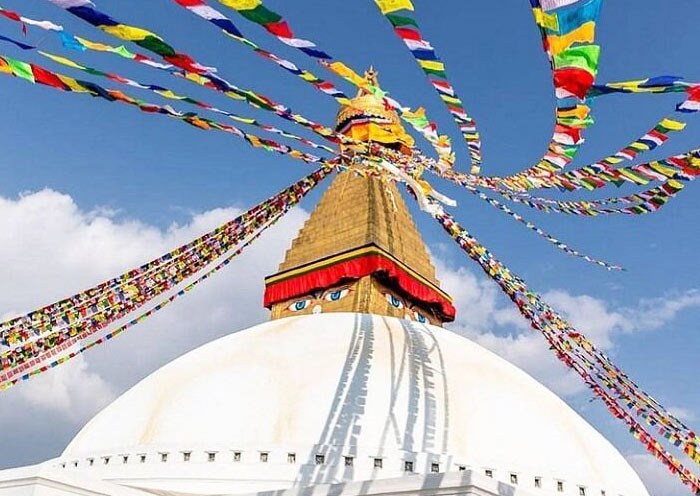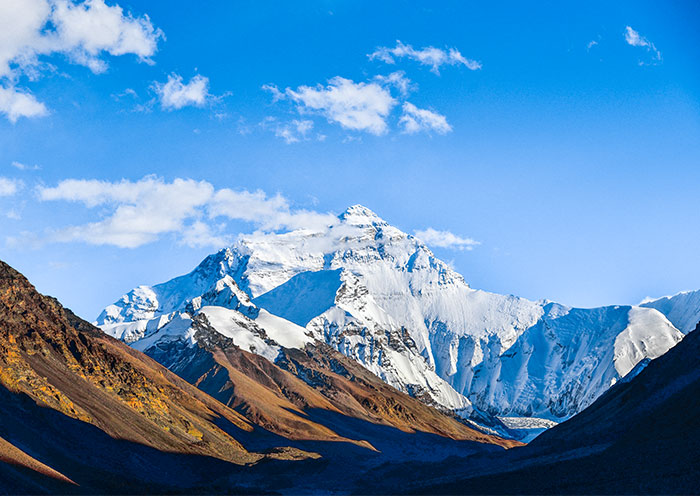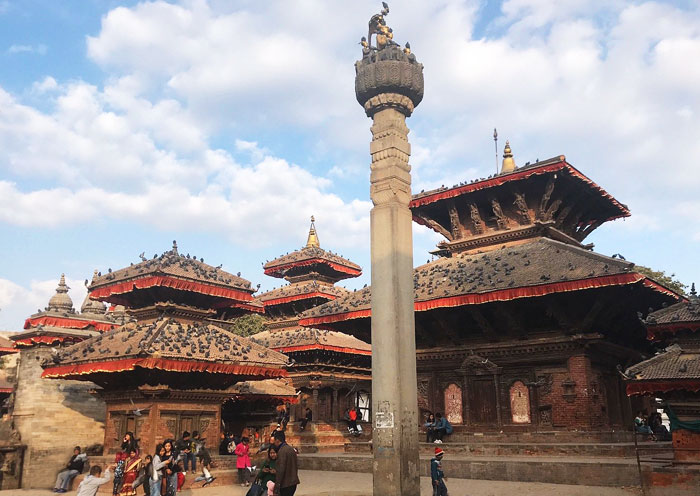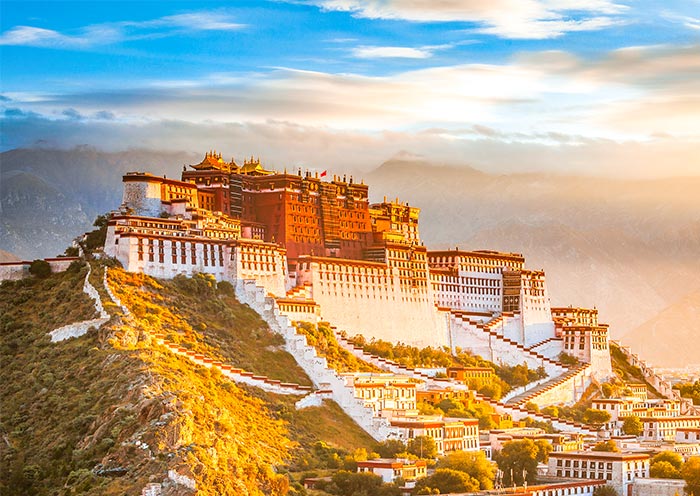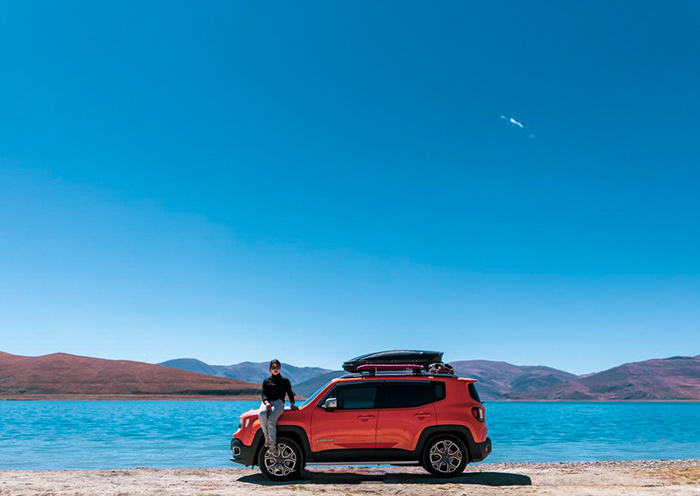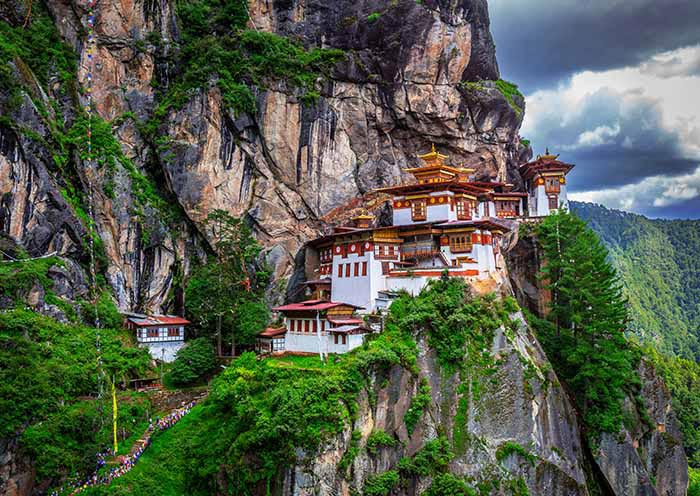- Highlights
- Itinerary
- Price
- Trip Notes
- Accommodation
- Photos
- Reviews
What is the experience like of traveling from the Roof of the World (3,650m to 5,200m) down to the Kathmandu Valley (1,300m)? Does the altitude difference contribute to the brilliant landscape and unique culture of the Himalayan area? Would you like to Visit Nepal by Overland from Tibet? Our 11-day tour from Lhasa to Kathmandu via Gyirong Port could be your first choice to enjoy a wonderful Tibet Nepal tour.
This Tibet Nepal Overland Tour begins on the Tibetan Plateau, starting with your arrival in Lhasa, "the Land of Gods”. You will be impressed by the highlights of the top 3 cities of Tibet - Lhasa, Gyantse, and Shigatse - as well as must-visit places such as the Potala Palace, Jokhang Temple, Barkhor Street, Sera Monastery, Drepung Monastery, Yamdrok Lake, Karola Glacier, Pelkor Monastery, Rongpuk Monastery, and Mount Everest Base Camp (5,200m). You’ll stand under starry skies and get a great view of the north face of Mt. Qomolangma (8,848m, the highest peak in the world). After that, head to Nepal via Gyirong Port to discover the legendary Kathmandu Valley (1,300m), the “Buddha's Paradise”.
In Nepal, the best choice is to explore its Kathmandu Valley though the three ancient cities of Kathmandu (the capital of Nepal), Patan (also known as Lalitpur, the City of Fine Arts), and Bhaktapur (An Open Museum). These three cities were once independent states ruled by the Malla Kings (12th- 18th centuries). You will visit many World Heritage Sites located in these cities, including Kathmandu Durbar Square, Patan Durbar Square, Bhaktapur Durbar Square, Changu Narayan Temple, Boudhanath Stupa, Pashupatinath Temple, and Swayambhunath Temple.
Join us for a Panoramic Tibet Tour with EBC and a Classic Nepal Kathmandu Valley Tour for an unforgettable journey through the amazing Himalayan region. Take our Tibet Nepal Tour at the best price and with the best service!
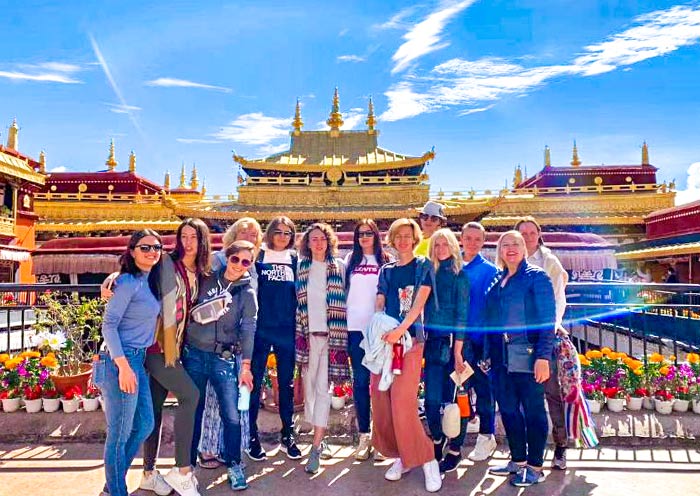
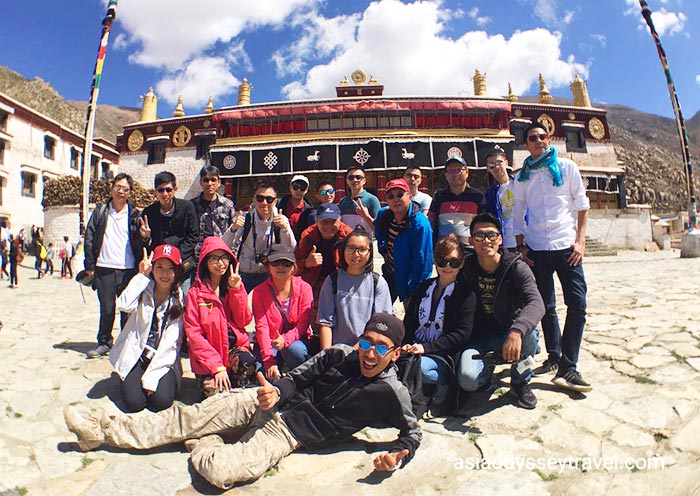
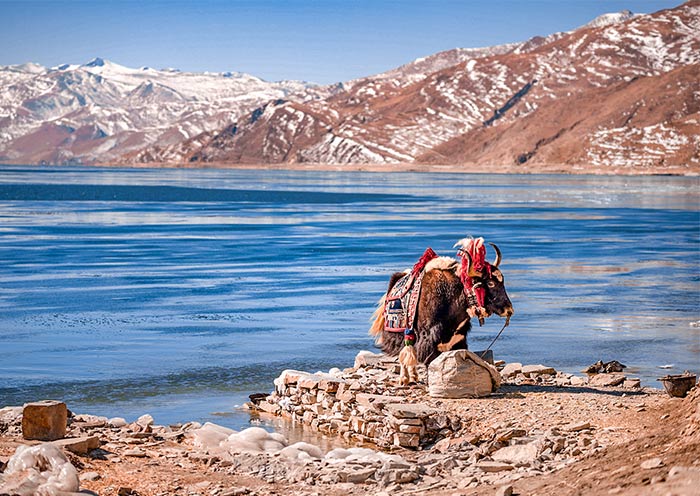
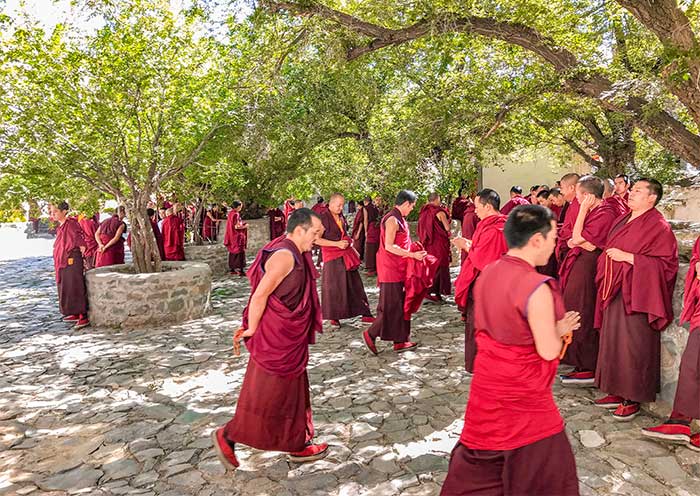
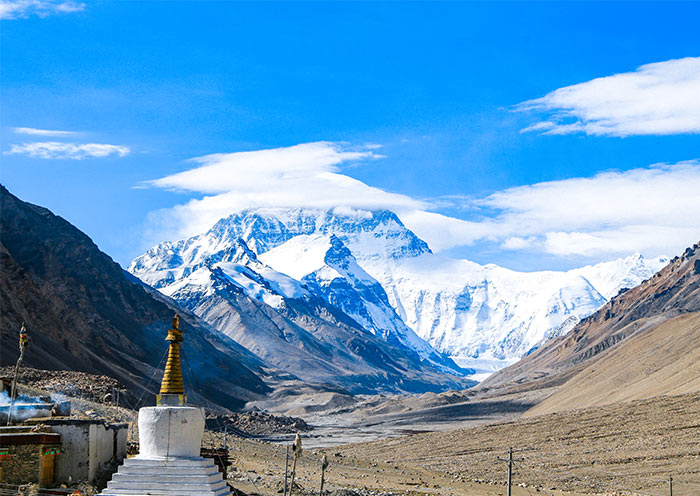
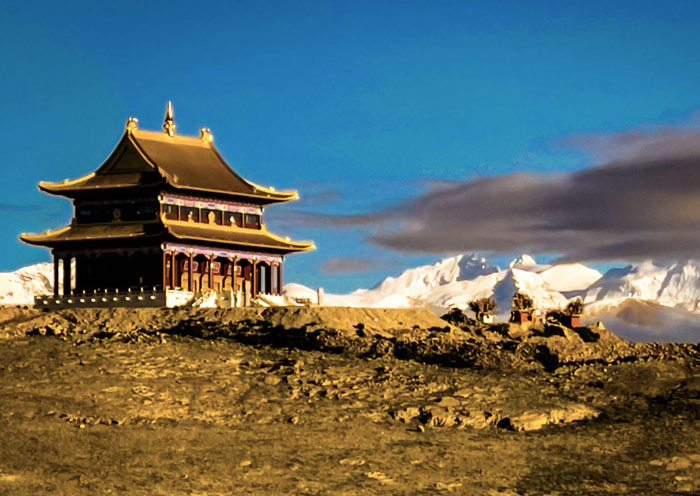
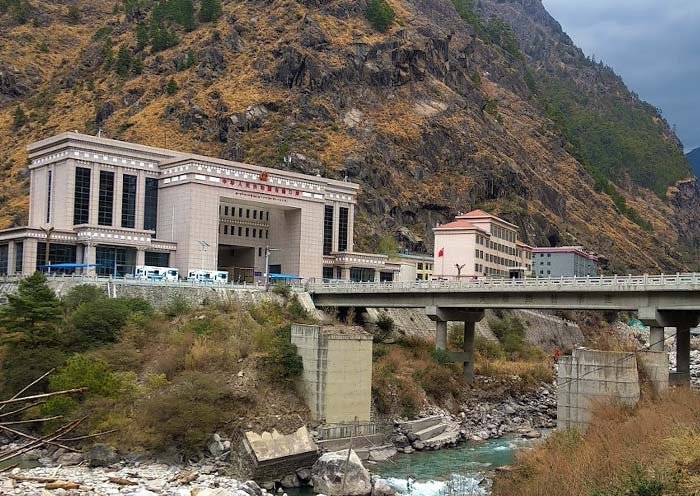
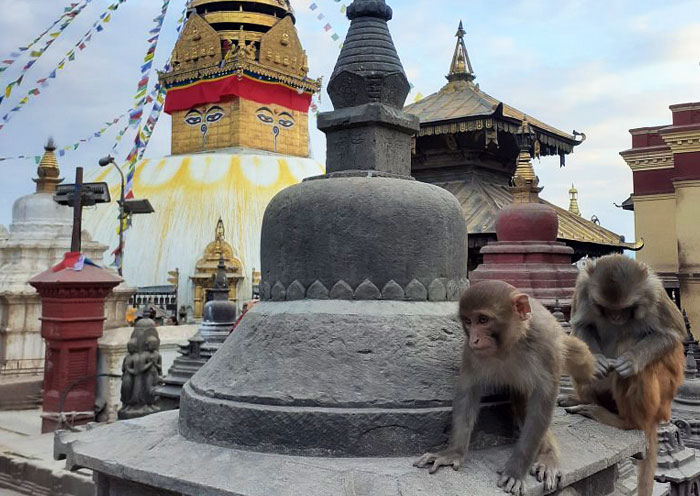
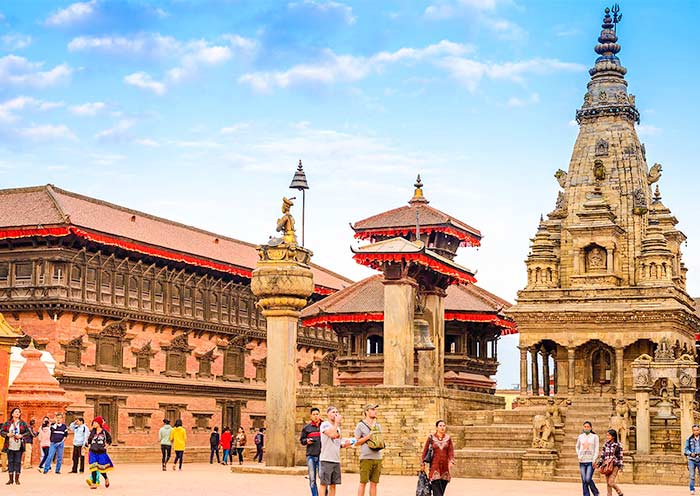
Itinerary at a Glance
Lhasa (3 Days)
Jokhang Temple, Barkhor Street, Sera Monastery, Potala Palace, Drepung Monastery
Gyantse & Shigatse (2 Days)
Yamdrok Lake, Karola Glacier, Pelkor Monastery, Tashilunpo Monastery
Mount Everest Base Camp (1 Day)
Rongbuk Monastery, Everest Base Camp, Gyawu La Pass
Old Tingri & Gyirong Border (2 Days)
Qomolangma Guandi Temple, Gyirong County, Gyirong Town, Gyirong Port, Rashuwaghadi
Kathmandu (3 Days)
Kathmandu Durbar Square, Kumari Temple, Swayambhunath Stupa (Monkey Temple), Pashupatinath Temple, Boudhanath Stupa, Patan Durbar Square, Bhaktapur Durbar Square
Itinerary Day by Day
Tashi Delek! Welcome to Lhasa, the capital of the Tibet Autonomous Region! Upon your arrival at the airport in Lhasa, the tour guide and driver will meet you at the exit, and then escort you to the hotel in downtown Lhasa (100km, about 1.5 hours’ drive) . You can have a good rest to get used to the altitude (3,650m) in your hotel and get ready to explore Lhasa with your guide the next day.
Arrival Ideas:
Lhasa is located in the southern part of the Tibetan Plateau and southwestern China. Traveling to Tibet is convenient by air, railway, or road. There are five airports in Tibet, with Lhasa Gonggar Airport being the most popular for flights from Chengdu (which is also popular), Chongqing, Xian, Beijing, Shanghai, Guangzhou, Kunming, Xining, Shangri-La, and other cities. One international airline even connects Lhasa and Kathmandu. Moreover, travelers can take the train to Lhasa from Xining (21 hours, the starting point of the Qinghai-Tibet Railway), Lanzhou (24.5 hours), Chongqing (35.5 hours), Chengdu (36.5 hours), Xian (31 hours), Beijing (40.5 hours), Shanghai (47 hours), Guangzhou (52.5 hours), Shigatse (2.5 hours), Nyingzhi (4 hours), and other cities.
Kind Reminds:
1.It is good to avoid altitude sickness by slowing down, keeping warm, drinking water frequently, avoiding showers for the first one or two days, taking it easy, and sleeping well.
2.You should always follow your doctor's advice regarding altitude based on your health condition.
3.Be sure to let your guide or the hotel staff know whenever you feel unwell or need help. The people there are always willing to help and are good at dealing with altitude sickness.
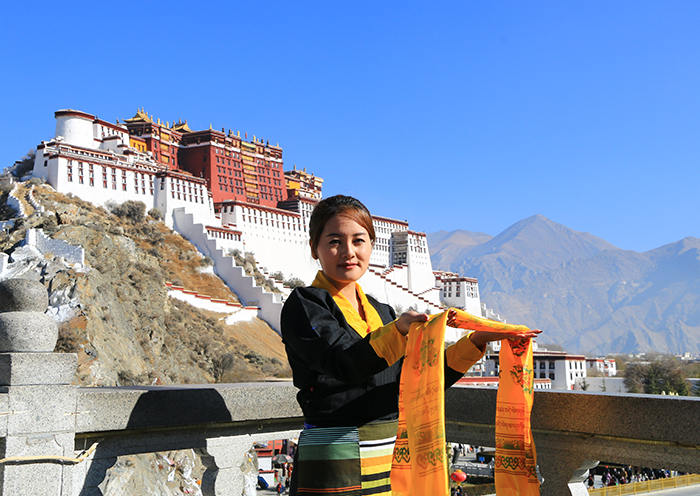
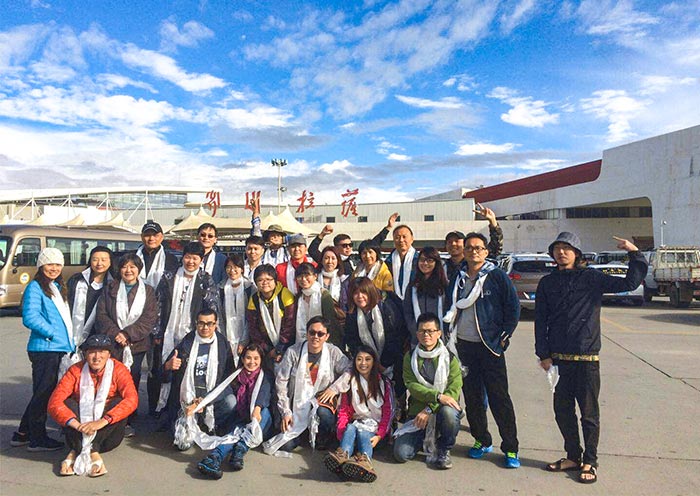
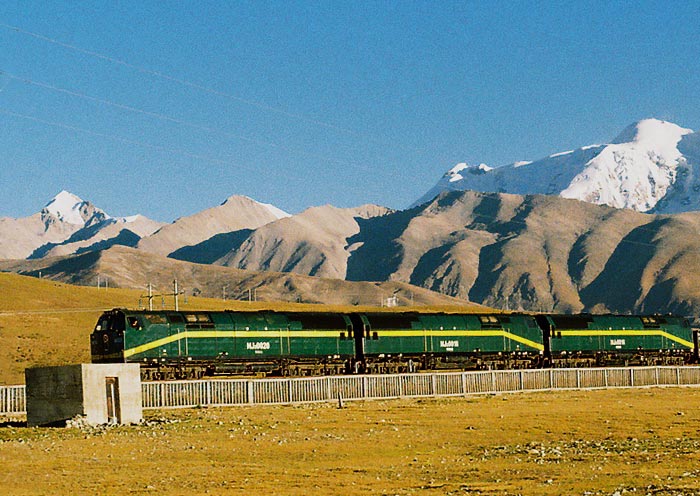
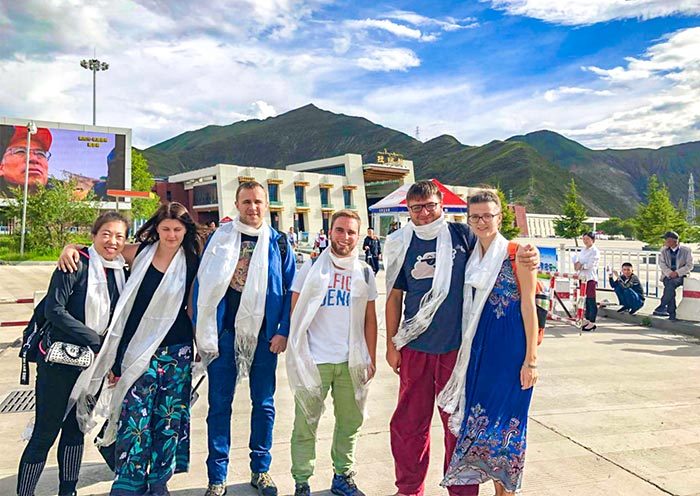
Today, you and your group will explore Lhasa by visiting Jokhang Temple, a world cultural heritage site renowned for its brilliant architecture, culture, art, and history. After that, you will experience Tibetan Buddhism by witnessing the Monks' Debating in Sera Monastery. Finally, you can stroll through the famous Barkhor Street with locals and learn more about the daily kora life of Tibetans.
Located in the heart of Lhasa for over 1300 years, the Jokhang Temple is an important pilgrimage site for Buddhists from all over the world. Famed as the spiritual center of Tibet, it is said that the Jokhang Monastery was built for King Songtsen Gampo's two brides: Chinese Princess Wencheng and Nepalese Princess Bhrikuti. "Jokhang" means "House of Buddha", and it houses a life-size statue of the 12-year-old Sakyamuni, which is considered a treasure of the Buddhist world. This is why Buddhist pilgrims consider it the holiest destination. The Jakhong temple is also renowned for its beautiful architecture. You can admire the intricate carvings, colorful murals, ornate decorations, and details of the building, which is a masterpiece of Tibetan architecture. Time seems to stand still as you watch people pray in front of the temple during the day and night. (Please note that the visit order may be adjusted based on the reservation of your Jokhang Temple Ticket Reservation.)
In the afternoon, drive approximately 30km (50 minutes) to visit Sera Monastery, which is one of the three great Gelug university monasteries of Tibet. It offers the opportunity to experience Tibetan Buddhism up close. The highlight of Sera Monastery is watching the monks' debate, which takes place around 15:00-17:00 (except on Sundays). The debate is an interesting form of exchange, where one monk acts as the questioner, standing while the answerer or group of answerers sit. The standing monk asks questions and slaps his palms and stomps, each action having a special meaning, such as activating wisdom, and are not meant to be aggressive. You will also have the chance to attend prayer ceremonies, visit meditation halls, and learn about the monastic way of life. It is a must-visit destination to gain insight into the beliefs and practices of Tibetan Buddhism.
Afterward, head back to downtown Lhasa for a walk on busy Barkhor Street near the Jokhang Monastery, which was a place for Buddhists to do a kora (pilgrim circuit) in ancient times. Nowadays, it has become a thriving local market where you can drink a pot of yak butter tea, dress in Tibetan clothes for photos, and pick up some local Tibetan, Nepalese, and Indian handicrafts and souvenirs.
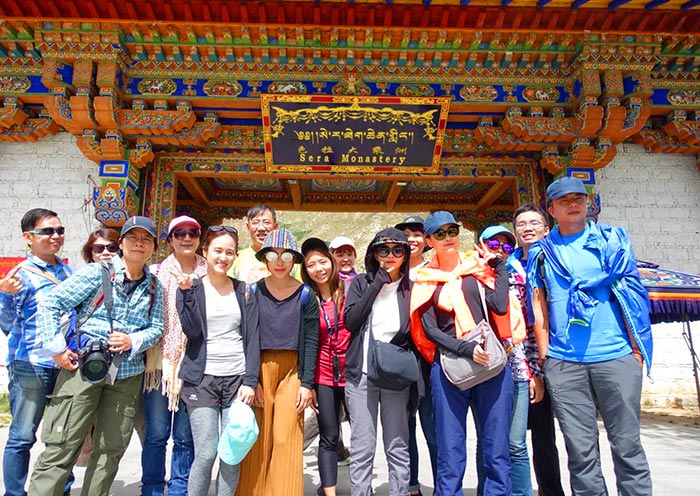
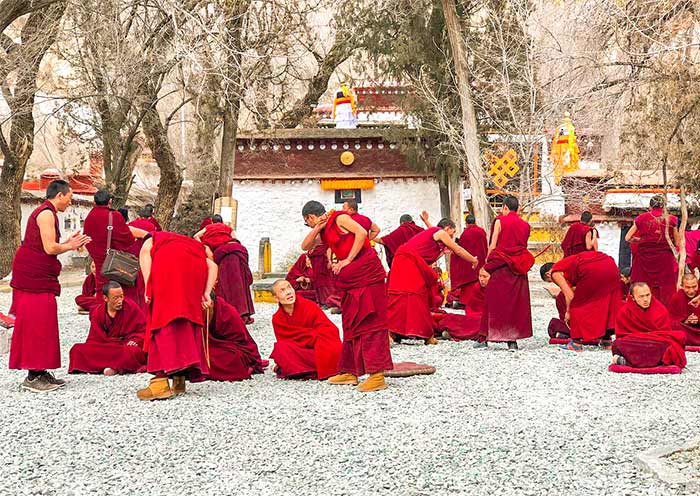
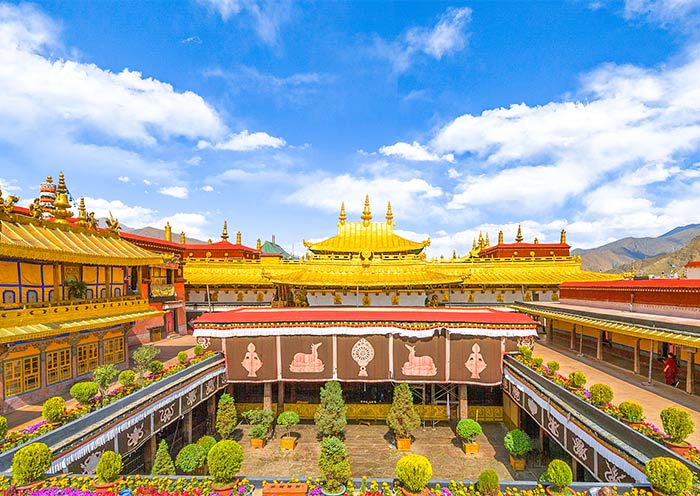
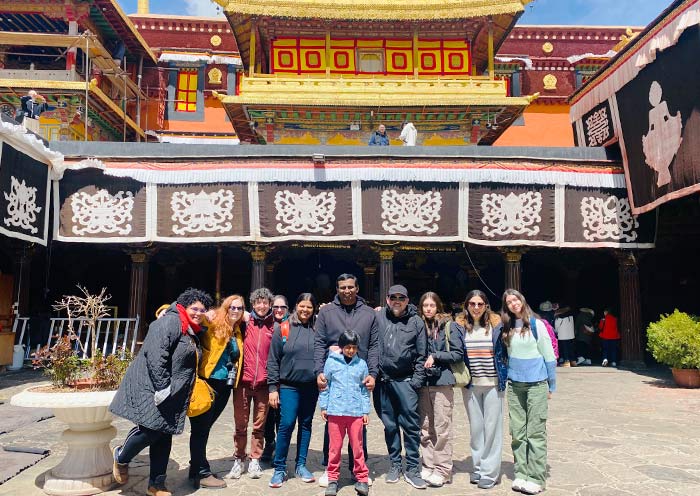
Today you will explore the world’s highest palace for its brilliant architectures, culture, and history, then visits to one of the "great three" Gelug university monasteries in Tibet - the Drepung Monastery.
In the morning, you can walk into Potala Palace (World Heritage), the traditional residence and winter palace of the Dalai Lama (1649-1959). It takes 365 steps from potala gate to reach the Red Palace which is the highest palace in the world at an altitude of 3,700m. Through the principal halls, chapels, and shrines of past Dalai Lamas in the Red Palace, you will be astonished and touched by its remarkable paintings, gorgeous jeweled works, skilled carving, colorful ornamentation, and the mystery stories behind the treasures. Inside the Potala Palace you will meet lots of Tibetan pilgrims who come all the way from afar to this sacred site to pray as their life time destination. You can also ask your guide to share more information about Songtsen Gampo, the 33rd king of Tibet, who first build the Potala Palace in the 7th century for his marriage to Princess Wencheng of the Tang Dynasty. (Note: We may adjust the visit order due to the visiting time of your Potala Palace Ticket. All visitors must visit the Potala Palace with a tour group while staying inside for an hour. No photo inside.)
Then, drive about 35 minutes (12km) to visit the Drepung Monastery, which was the largest Tibetan monastery (of the Gelug Sect) in Lhasa. It used to be the palace of the Dalai Lama before he moved to the Potala Palace in the 17th century. Today, it is famous for the Drepung Shoton Festival held each August, where people come to offer yogurt to the monks who have finished their 100 days of meditation. You can also witness the grandest Buddha/Thangka Unfolding Ceremony. Besides the unique architecture and amazing buildings, you can watch monks debating in Tibetan Buddhism, which is vibrant and active with expansive gestures, clapping, and stamping. After visiting the Drepung Temple, you will have about a 2-hour Tibetan culture tour, which includes an introduction, Tibetan incense making, and block printing.
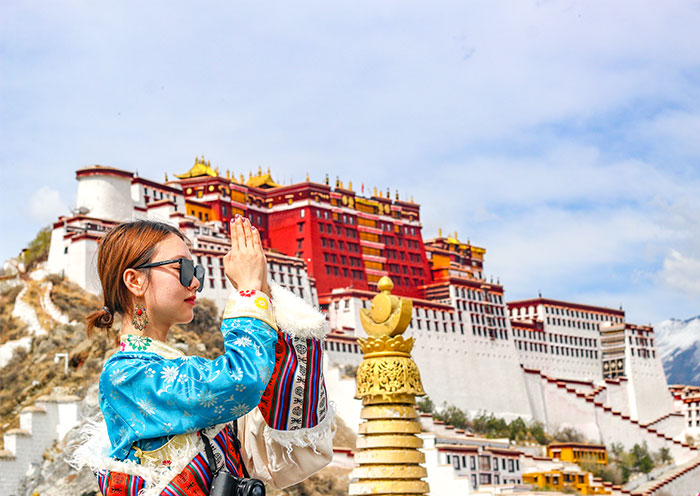
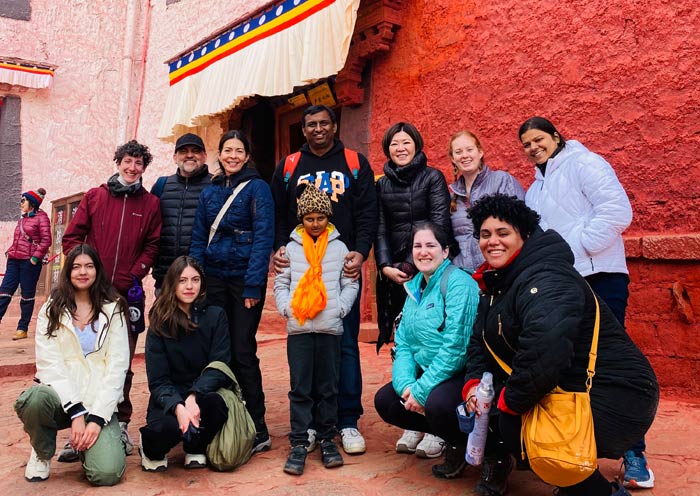
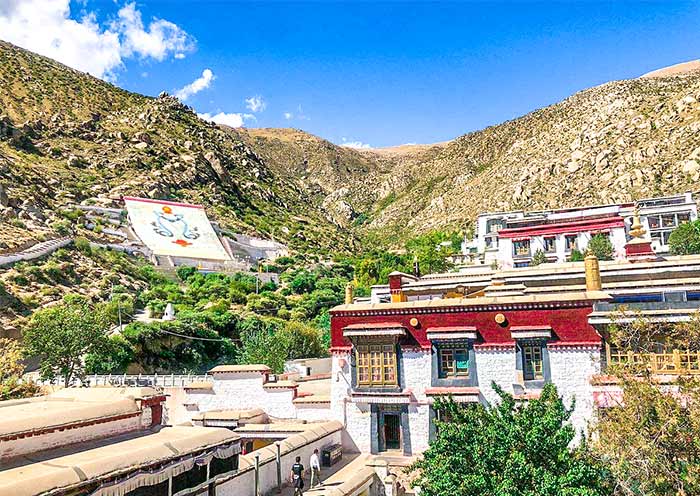
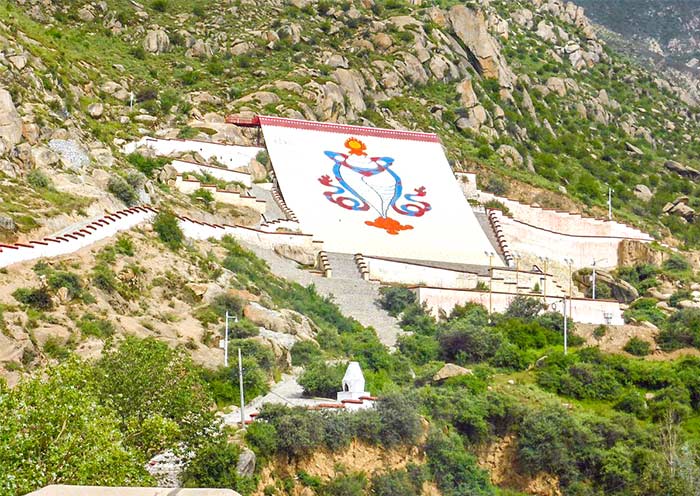
Today, drive about 7.5 hours (270km) from Lhasa to Shigatse (3,850m) via Gyantse (3,950m). You will visit two amazing natural landscapes - Yamdrok Lake and Karola Glacier on the way, then after a visit of Pelkor Monastery in Gyantse, you will reach Shigates for overnight.
In the morning, you will head to the Kampala Pass (4,797 meters) and have a breathtaking view of Yamdrok Lake (a freshwater lake) down below as well as spectacular views of the holy Mt. Nyenchen Khangsar (7,206m) in the distance. It is one of the four largest sacred lakes in Tibet along with Lake Lhamo Latso, Lake Manasarovar, and Lake Namtso. And Lake Yamdrok is said to be able to help Tibetans find the reincarnated soul of the Dalai Lama. You will be happy to see dressed-up Tibetan mastiffs/dogs, goats, and yaks there. It is optional for you to pay 5-10 yuan to pose with and take photos of them, for local Tibetans, it’s a subsidy income for their family.
Then, drive to visit one of the most beautiful Glaciers in Tibet - Karola Glacier, the location of the film Red Valley (Hong He Gu). As one of Tibet's three major continental glaciers, backed by the southern slope of Naiqin Kangsang Peak (7,191 meters), one of the four highest peaks in Tibet, this white glacier is also the source of the eastern part of the Nianchu River. The Karola Glacier (5,012m) is only 300 meters away from the highway connecting Lhasa to Gyantse town. You can view it right off the highway from your car. Sure you can easily walk to the foot of the charming glacier which shape is like a frozen waterfall right above the road and you. Besides the fantastic hike to the Karola Glacier, on the opposite side of the road, you can appreciate the beautiful snow-capped mountain of Mt Kalurong.
Karola Glacier Visiting Notes:
1. The altitude at the glacier scenic spot is about 5,012m, be sure to slow down to avoid altitude sickness.
2. The public toilet at the glacier is very basic.
3. Local people would ask you to take photos with them for a fee. Be sure to ask before taking photos to avoid potential little troubles.
After that, drive on the Friendship Highway( between Tibet and Nepal) to Gyantse, the third largest city of Tibet after Lhasa and Shigates, and visit Pelkor Monastery.
Pelkor Monastery (Palcho Monastery) is an important site for Tibetan Buddhism, as it houses different sects including the Gelug, Sakyapa, and Kadampa. Pelkor Monastery, with a history over 600 years, is also renowned for its impressive architecture, which blends Tibetan, Nepalese, and Han Chinese styles. One of the main attractions of Pelkor Monastery is the Kumbum Stupa (Gyangtse Kumpum), which is a nine-story tower adorned with thousands of images of Buddhas and Bodhisattvas. It is said to be the largest such structure in Tibet. Visitors can enjoy their time by witnessing the daily rituals and prayers of the monks, and have a panoramic view of the surrounding landscape from the top of the Kumbum Stupa (100-Thousand-Buddha Pagoda). You can also catch the far view of Gyangtse Fortress (Gyantse Dzong). After that, drive about 90km to reach Shigates for overnight.
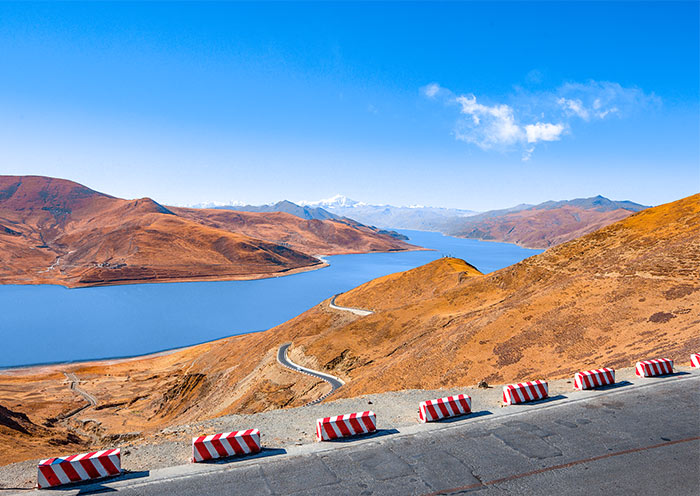
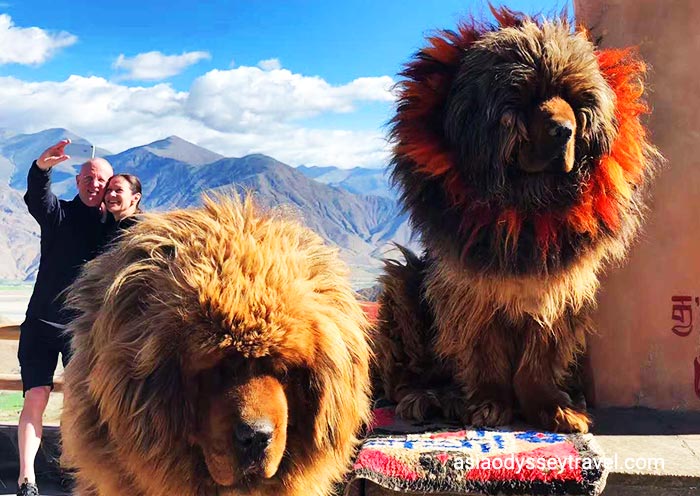
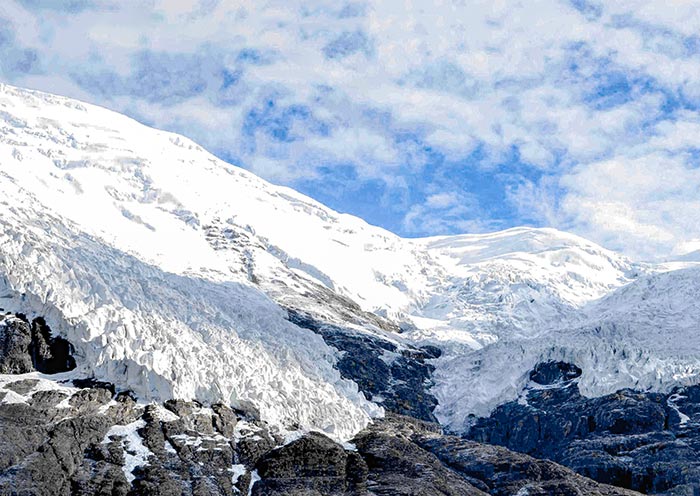
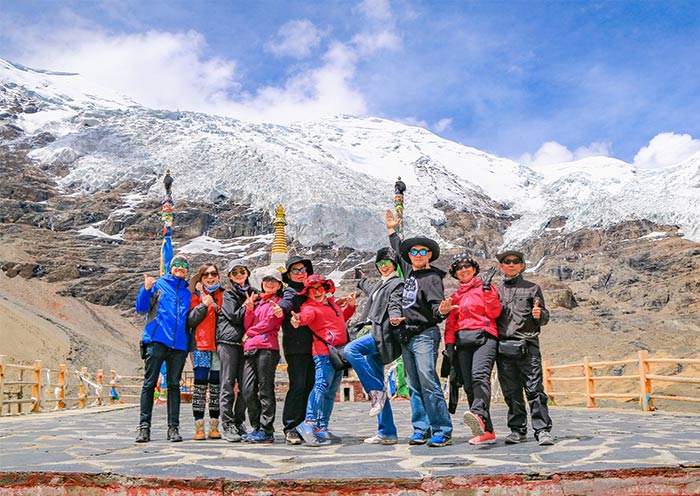
You will get an early start with a visit to Tashilhunpo Monastery. After that, drive to Rongpuk Monastery (5,100m) and Mount Everest Base Camp (5,200m) which is 340km (8h) from Shigatse via a photo stop at Gyawu La Pass (5,200m).
Tashilunpo Monastery is founded by His Holiness the 1st Dalai Lama, Gyalwa Gedun Drup in 1447. In Tashi Lunpo Monastery, you can unveil the traditional seat of successive Panchen Lamas, Tibet's second-highest incarnation. Pay a visit to the ancient tombs of the fourth and tenth Panchen Lama and the chortens, which hold the bones and remains of the sacred Tibetan lamas. Learn more from your guide about Panchen Lamas and Dalai Lamas while appreciating the brilliant religious painting on Tibetan architecture, listening to the Tibetan Buddhism chanting by local monks, and even participating in the kora like locals. Don’t forget to hike up to the top of the monastery and have a stunning bird view of the monastery itself and Shigatse City.
Departing from Shigatse, after about 4.5 hours of driving (240km), you would get your first glimpse of Mt. Everest from the Gyawu La Pass (5,200m), between Lhatse and Shelkar. Apart from Mt. Everest, you will be marveled at the zigzag road that looks winding to the end of the world. On the road, you may see local people biking or hiking all the way to Everest Base Camp, for them reaching the base of the world's highest mountain is a must do goal or holy belief that is worth the effort.
After enjoying the beautiful and unique scenery on the pass with incredibly snow-capped mountain ranges, blue skies, floating high clouds, and endless grasslands, it is time to head to Rongbuk Monastery (about 3.5 hours,122km) which is the highest monastery in the world and the best site to view the north side of Mt. Qomolangma (Mt. Everest), also known as the Third Pole on Earth. With both monks and nuns in residence, Rongbuk Monastery is a must-visit for spiritual travelers, and you will find it to be a photo-worthy destination. It used to be an area of meditation huts, and you can find hermitage meditation caves with a history of over 400 years, dotting the cliff walls all around the monastery and the valley. You can admire the magnificent sunset on Qomolangma's steep north side in good weather. The humble stupa at the monastery is the same one that can be seen on most postcards and posters of Mt. Everest.
Overnight in a tent guesthouse at Rongbuk Monastery or EBC. If you venture out at night, you will be rewarded with a heavenly starry night.
Notes:
1. Travelers can only go as far as the Rongbuk Temple area rather than a few kilometers farther as before. But it’s no big difference in terms of viewing Mt. Everest.
2.Today’s food and lodging is very basic. Due to the high altitude, it is possible that you may have some symptoms of altitude sickness. We recommend that you stay well hydrated, relax and enjoy the beautiful scenery to minimize your symptoms.
3.If you're interested in trekking to EBC from Old Tingri, you can spend 4 days trekking along the relatively open, flat, and safe route. The trek is suitable for almost all people, including underage children, without severe altitude sickness. Taking four days to cover 70km at an average pace of 18km per day is a lifetime experience to walk on the world's highest trekking trail and realize the dream of standing close-up to the towering Mount Everest. Contact us to customize a trekking trip from Old Tingri to Everest Base Camp.
4.When we talk about Everest Base Camp (EBC), we are referring to the area near Rongbuk Monastery that ordinary travelers are allowed to visit. EBC is about 20km from Mount Everest’s summit as the crow flies. From EBC, travelers can view the summit of Mount Everest in fine weather.
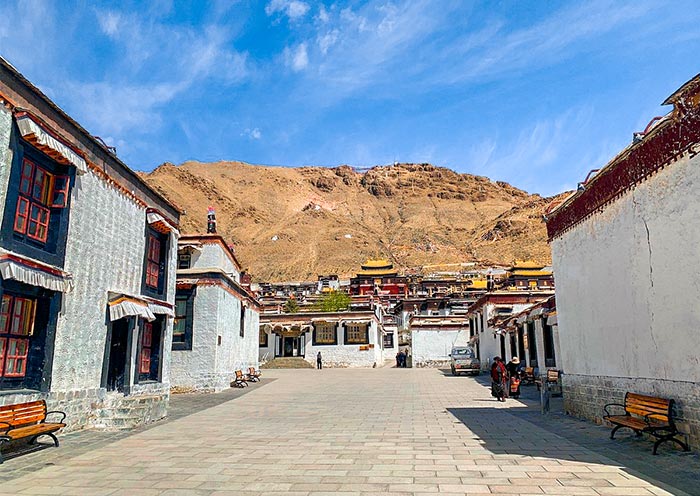
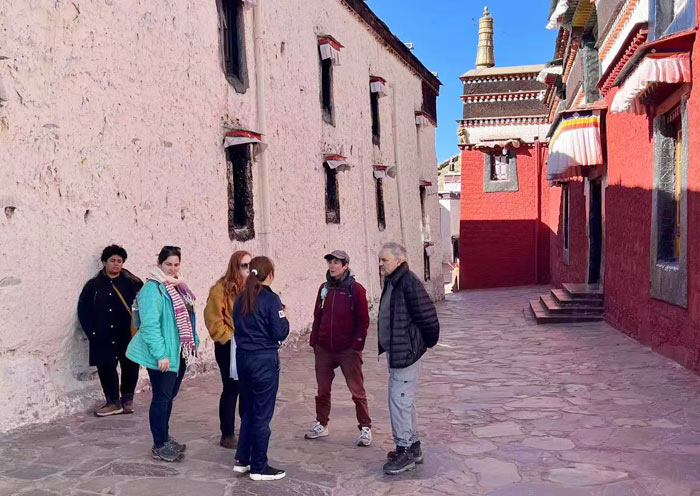
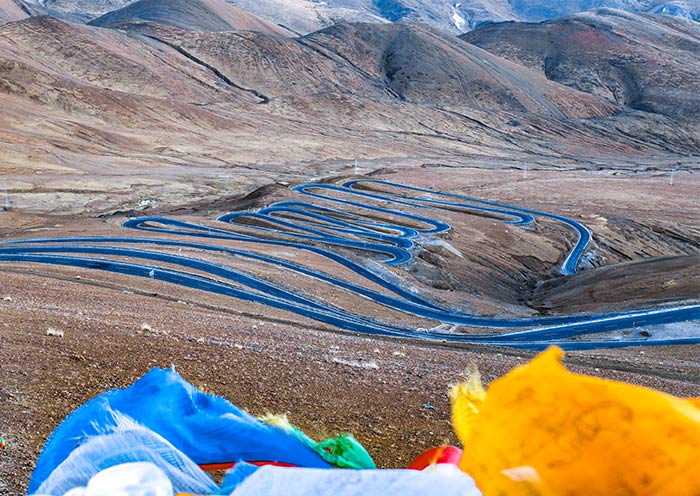
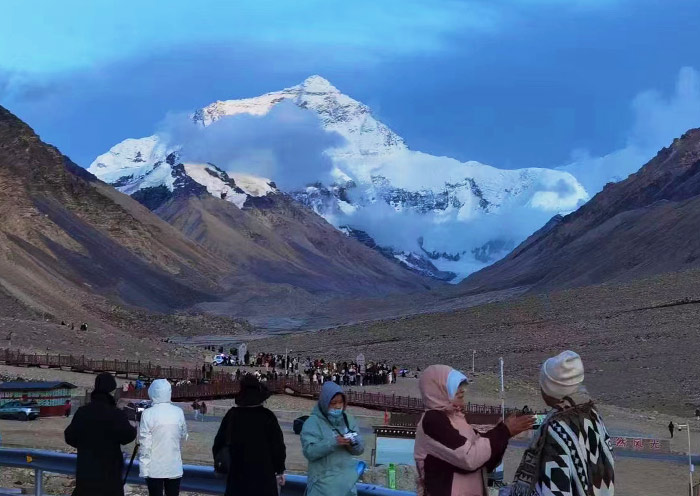
Try your luck at witnessing the breathtaking sunrise of Mount Everest in the early morning (Note: The sunrise usually starts around 6:30 am to 7:00 am). After breakfast, head to Everest Base Camp. It is a 4 km hike from Rongbuk Monastery to Everest Base Camp (5,200m), which is the closest place for ordinary tourists to view the world’s summit. (Note: It is optional to take sightseeing bus to EBC. Self-pay for the bus.) Take your time at Everest Base Camp to enjoy the amazing view of the peak of Mount Everest (8,848m), the highest peak in the world.
After that, drive to Old Tingri (Gangga Town, 145km, 3.5h) on well paved road via Gyawu La Pass (5,200m). Gangga Town is located 71 kilometers away from Tingri County (New Tingri; Shegar; Xiegel) at an altitude of 4340 meters. It is situated 74 kilometers away from the Mount Everest Base Camp. The G318 National Highway runs through the whole town and is the only way to Zhangmu Port and Gyirong Port (China-Nepal Borders).
There is a unique Guandi Temple in Gangga Town that you should not miss. It is an excellent spot to watch sunset of Mount Cho Oyu Peak (8201m), the sixth highest peak in the world. From there, you can not only view Mount Everest (8488m), but also Nepal, India, and Bhutan. It is known as the "One Temple Look at the Four Kingdoms" International Golden Palace by locals.
The Gangga Guandi Temple, also known as Qomolangma Guandi Temple, is located on Gangga Mountain (4390m) which is the highest Guandi Temple in the world. Normaly, Guandi Temple a temple where Guan Yu is worshiped. Guan Yu was a famous general during the Three Kingdoms Period (1800 years ago) and is considered the god of war by the Han people. His status was almost equal to that of Confucius. The Qomolangma Guandi Temple was built in 1794, more than 200 years ago. After the Qing Dynasty army and Tibetan soldiers fought back against Gurkha (Nepal), who invaded Tibet from 1788 to 1792, all the soldiers believed that the victory of this battle was the blessing of Guan Yu. Therefore, the Guandi Temple was built here with the features of both Han and Tibetan architectural styles. Its main hall is dedicated to Guan Yu and King Gesar, a well-known hero among Tibetans. This is a testimony to the cultural exchange and integration of the Han and Tibetan nationalities, and a historical witness to the Chinese nation's united will to defend against invasion. Additionally, the Guandi Temple was restored in 2018 and is now a high-value copper building with carved beams and painted buildings in the main hall.
If you are interested and have time, you can also the cemetery of the Qing army, the forts and watchtowers that fought against the Gurkhas, and the stone tablet of "Qomolangma Nature Reserve" inscribed by President Jiang Zemin.
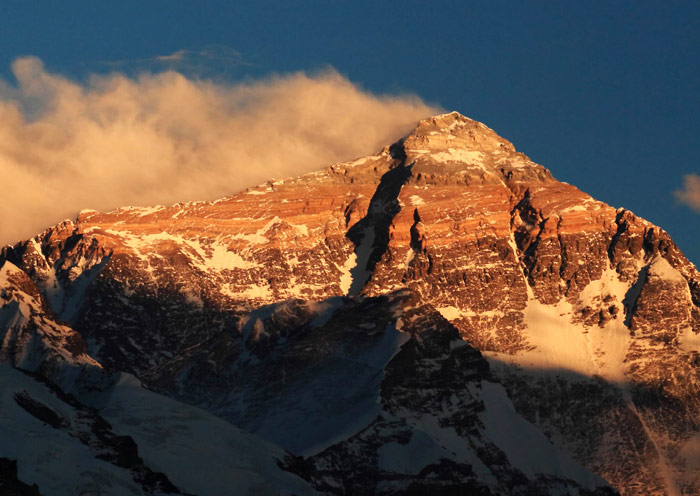
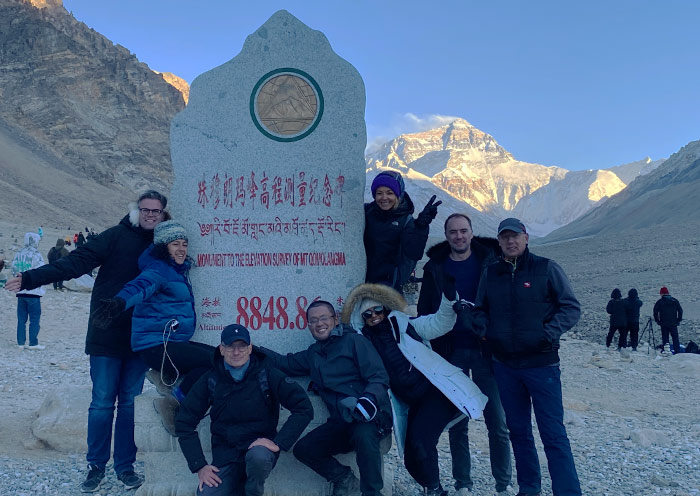
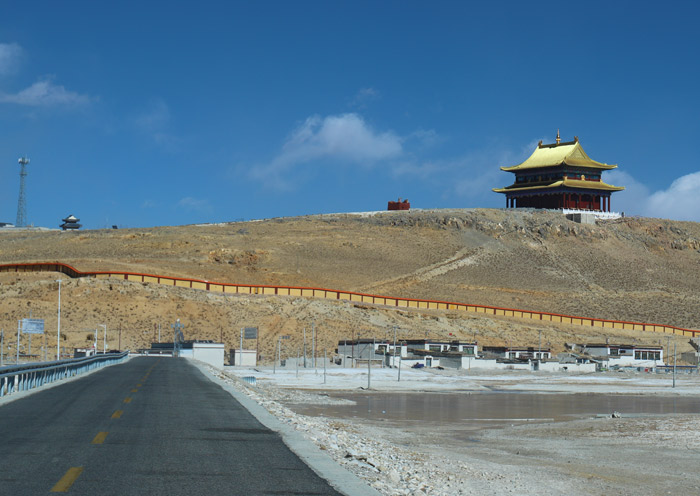
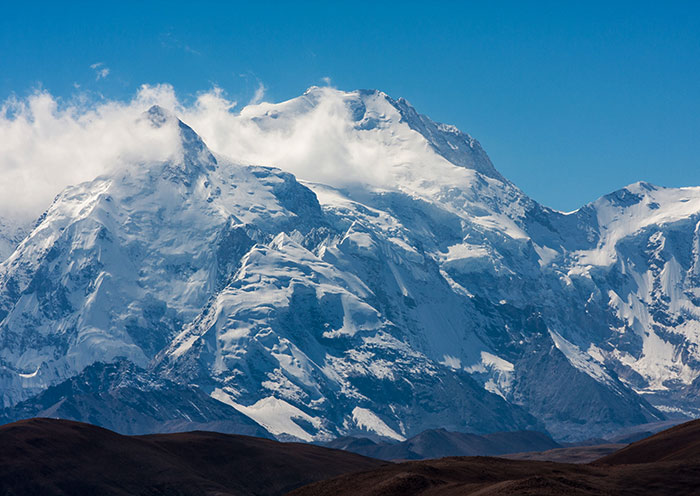
Today, you will head to Gyirong Town (280km,6h) via Gyirong County (4,200m), where the Gyirong Port is located, via a part of the Friendship Highway, also known as the China-Nepal Highway. On the way, you will get good chance to see the majestic and awe-inspiring Mount Shishapangma, about 120km from Mount Everest and located in the Himalayas near the Nepal-Tibet border. At an elevation of 8,027 meters, Mount Shishapangma is the 14th highest mountain in the world and the only 8,000-meter peak that lies entirely within Tibet. The mountain is known for its striking appearance, with its towering peaks and massive glaciers.
Gyirong Town is located on the border between China and Nepal, and serves as an important entry and exit point for travelers between the two countries. You can pay a visit to Paba Monastery which was built around 637 AD. When the Nepalese Princess Bhrikuti, who married Songtsen Gampo, entered Tibet, she brought three statues of Shakyamuni Buddha with her, one of which was the statue of Wadisambhava. It was placed in Gyirong Town, and Paba Monastery was built for it. Visit around Gyirong and get ready for the border exit next day.
Travel Notes:
The Friendship Highway is an 800-kilometre scenic route that connects Lhasa, the capital of Tibet, to the Chinese/Nepalese border at the Sino-Nepal Friendship Bridge between Zhangmu and Kodari. (Note: Currently, the Zhangmu Port is primarily used for freight, while Gyirong Port is used for tourism.)
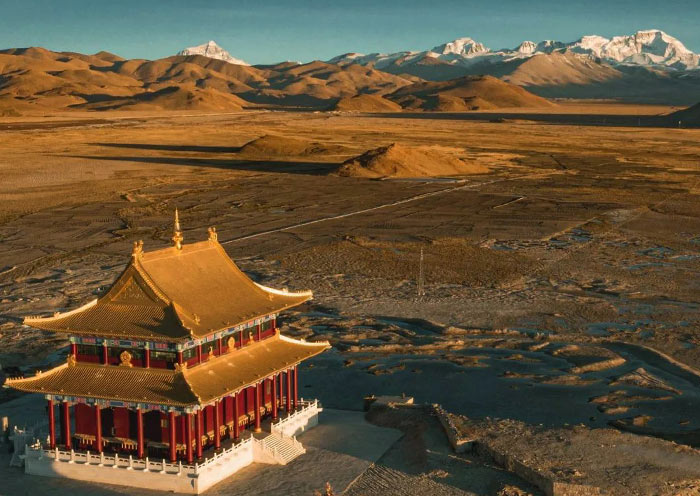
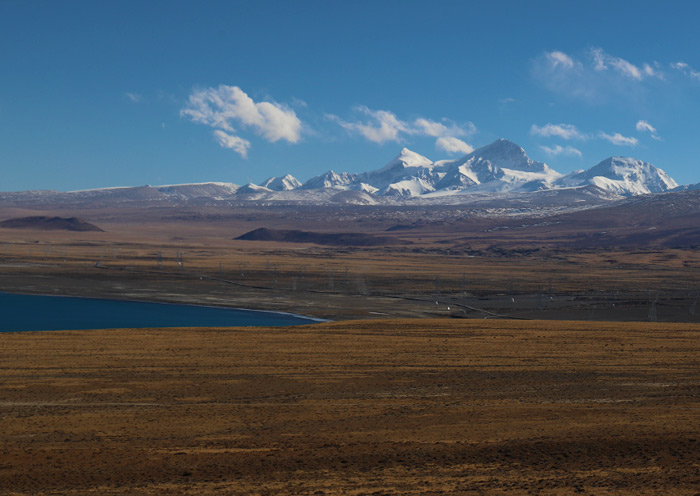
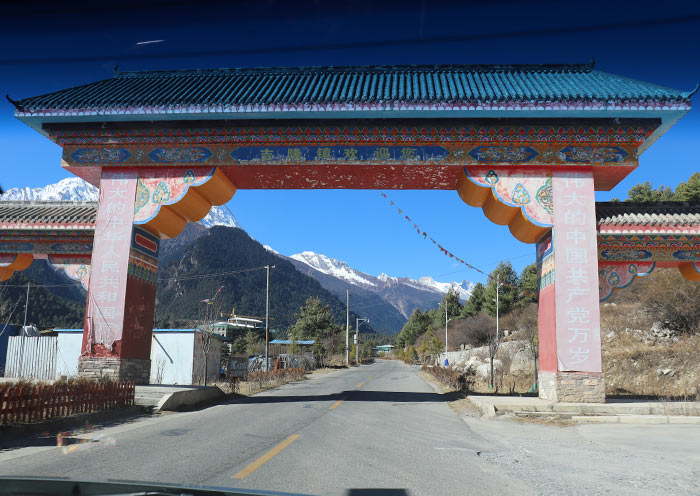
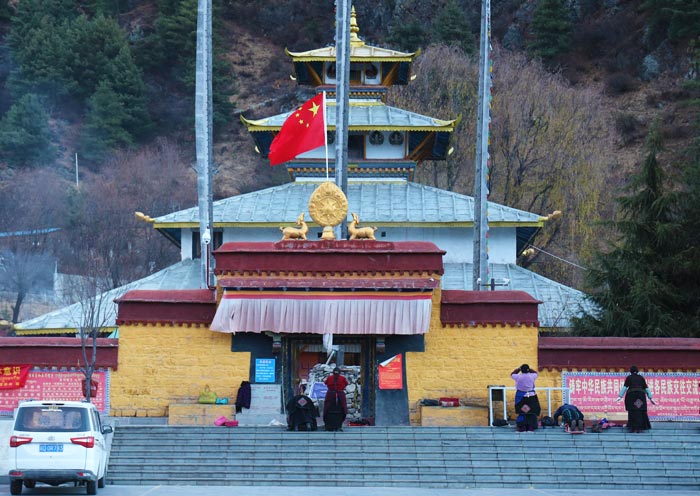
Today, you will across the Gyirong Border and head to Kathmandu(1,400m) via a mountain road. Although it is only 150km from Rashuwaghadi to Kathmandu, it may take more than 6 hours due to the bad road conditions.
Welcome to Kathmandu, the capital of Nepal! Upon arrival, your will be check in at your hotel in Kathmandu. Once you have settled in, you are free to explore the city at your leisure for the rest of the day.
Kathmandu is the largest city of Nepal. It is located in the Kathmandu Valley, which is surrounded by the Himalayan mountain range. The city has a rich cultural and historical heritage, with many ancient temples, palaces, and monuments. The city's architecture is a blend of traditional Newari style and modern designs. Kathmandu is also known for its vibrant street life and bustling markets, such as the Asan Bazaar and the Thamel district, which offer a wide range of goods and services. Its rich festival culture, stunning architecture, and friendly people make it a popular destination for travelers from around the world.
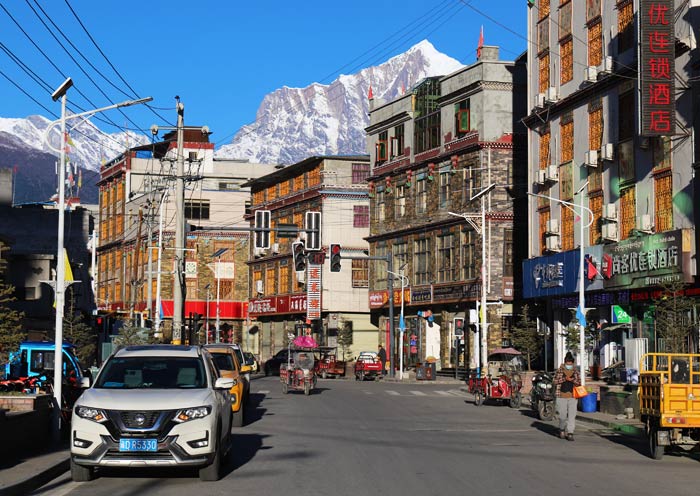
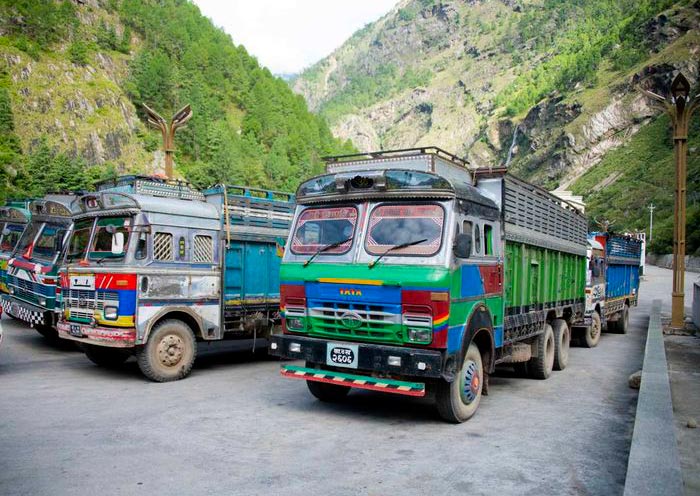
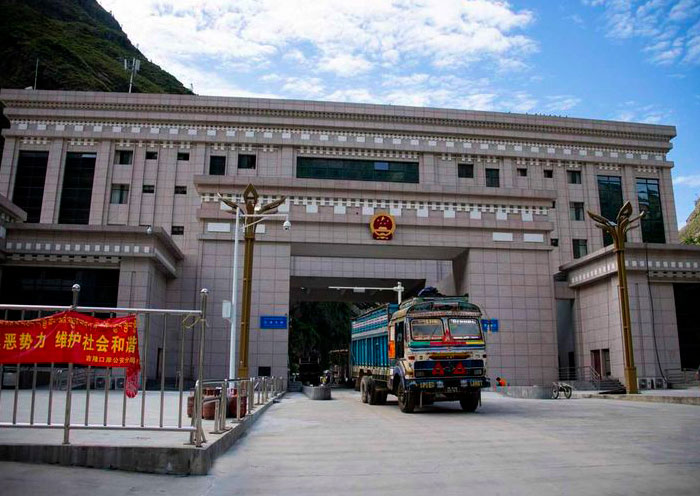
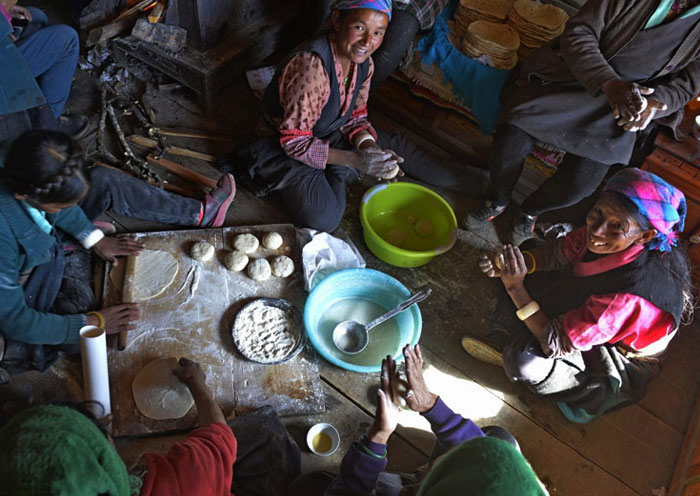
Today, you will explore some of the most iconic sites in Kathmandu and Bhaktapur, two of the three royal cities in the Kathmandu Valley. Begin by visiting Kathmandu Durbar Square (World Heritage), one of three royal palace squares in the Kathmandu Valley. This square served as the royal residence for Nepalese rulers until the 19th century and was the site of coronations for centuries. At the south end of Kathmandu Durbar Square is the famous Kumari Temple (Temple of the Living Goddess). Through its Kumari Chowk, you may have the opportunity to catch a glimpse of the Kumari (the Living Goddess), who is worshipped by both Hindus and Buddhists in Nepal. The Kumari is a little girl selected through traditional tests and is believed to be the incarnation of the goddess Taleju (Durga) until she reaches menstruation age.
Then, move on to Swayambhunath Temple (World Heritage), also known as the Monkey Temple due to the swarms of monkeys (Rhesus Macaques) that inhabit the area. The temple is located on a hilltop on the western edge of the city, and the Swayambhunath Stupa is visible from a distance. The stupa is believed to have been built over 2,500 years ago, making it one of the oldest Buddhist sites in the world. You can climb the steep stairs to reach the top of the hill, where you can enjoy panoramic views of Kathmandu Valley and even the Himalayas on clear days. The temple's peaceful and spiritual atmosphere, combined with its stunning architecture and natural beauty, make it a must-visit destination for anyone traveling to Kathmandu.
After that, you will travel about 16 kilometers to Bhaktapur (Bhadgaun), also known as An Open Museum. You will visit Bhaktapur Durbar Square (World Heritage), which is surrounded by historical monuments, including the 55-Window Palace, the Golden Gate, and the Nyatapola Temple, a five-story pagoda-style temple that is one of the tallest in Nepal. Bhaktapur is also famous for its pottery, and if time permits, you can visit Pottery Square to see pots being thrown, dried in the sun, and fired. After exploring Bhaktapur, you will return to Kathmandu for overnight.
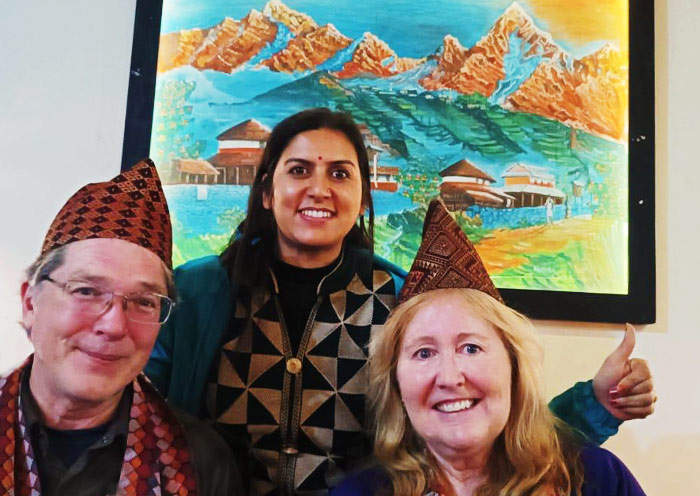
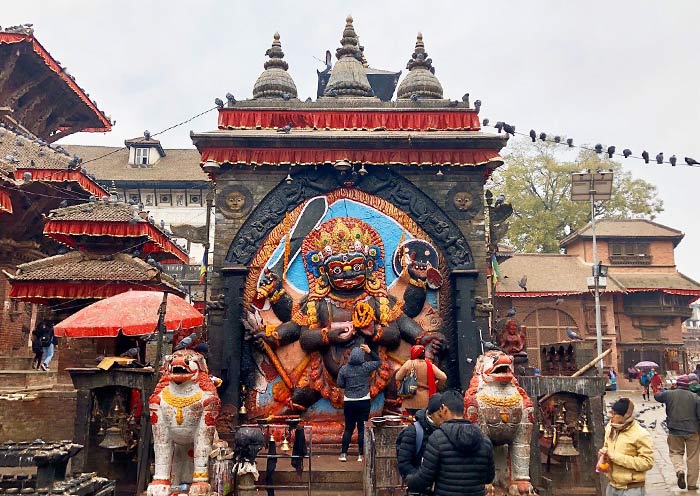

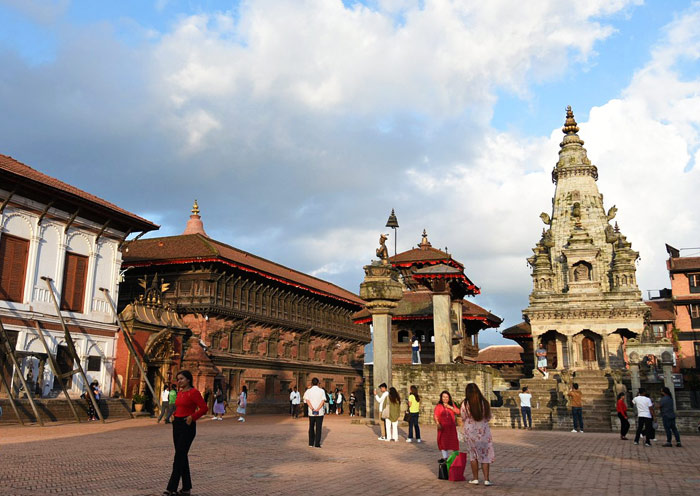
This morning, you will be thrilled to begin your sightseeing tour with a visit to Patan Durbar Square (World Heritage), which is the third Durbar Square in our Kathmandu Valley Tour. Located in Patan (Lalitpur), about 6 kilometers away from Kathmandu, this square is renowned for its ancient architectural masterpieces, including dozens of Buddhist and Hindu temples, pagodas, stone, and wood carvings. Like Kathmandu Durbar Square and Bhaktapur Durbar Square, Patan Durbar Square served as the royal palace of the Malla Kings before Prithivi Narayan Shah conquered the Three Malla Kingdoms of Kathmandu, Patan, and Bhaktapur in 1769 and consolidated them to found the modern state of Nepal. He also established the capital of Nepal in Kathmandu. Patan is believed to have been established around 2,300 years ago and is the oldest of the three cities that make up the Kathmandu valley.
Then, drive about 6km to Pashupatinath Temple (World Heritage) - a stunning pagoda-style Hindu temple dedicated to Lord Shiva. This magnificent temple, which dates back to around 400 B.C., is the oldest Hindu temple in Nepal and a must-see for any visitor to the region. The main temple complex at the Bagmati River is only open to Hindus, but non-Hindus can observe from the terraces on the east side of the river. The Bagmati River is Nepal's holiest river for both Hindus and Buddhists. It originates in the Himalayan Mountains, and it is believed that its waters have the power to purify souls. On the banks of the River Bagmati, there is a platform for cremation rites. For generations, families have carried the bodies of their loved ones who have passed away to the river to wash their feet and sprinkle drops of water on their faces. It is believed that the river washes away a person's sins and sends their soul to heaven. The body is then burned along the banks of the river, and the ashes are scattered into the water.
Afterwards, you will head to Boudhanath Stupa (World Heritage), which is one of the largest Buddhist stupas in the world. The first stupa at Boudhanath was built sometime after AD 600 when the Tibetan king, Songtsen Gampo, converted to Buddhism. Stupas were originally constructed to house holy relics, and some claim that Boudhanath contains the relics of the past Buddha, Kashyapa, while others believe it contains a piece of bone from the historical Buddha's skeleton, Siddhartha Gautama. The construction materials, including soil, bricks, and stones, were transported using elephants, horses, donkeys, and other animals.
The stupa at Boudhanath is a historical pilgrimage site for Buddhists around the world. You can follow the locals and walk in a clockwise direction around the stupa, turning the prayer wheels under the protective gaze of Buddha's eyes. The two eyes on each of the four sides of the stupa symbolize the Buddha's ability to see all. Boudhanath is also an excellent location for taking photos, especially at night when the stupa is illuminated by thousands of butter lamps. There are many shops around the stupa where you can purchase souvenirs, including singing bowls, prayer wheels, and prayer flags.
Stay overnight in Kathmandu.
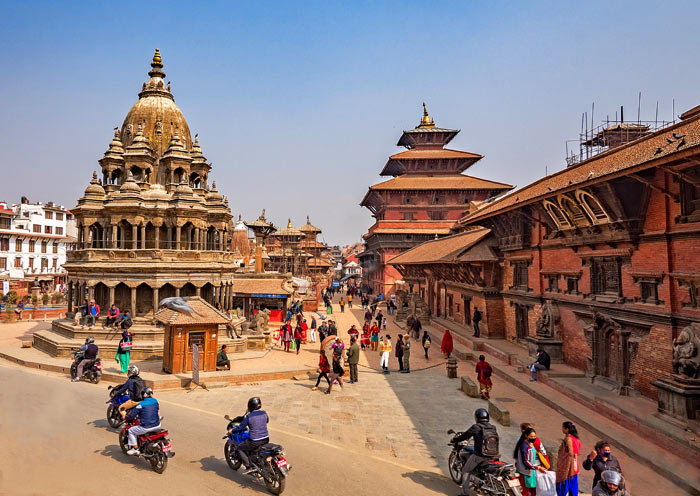
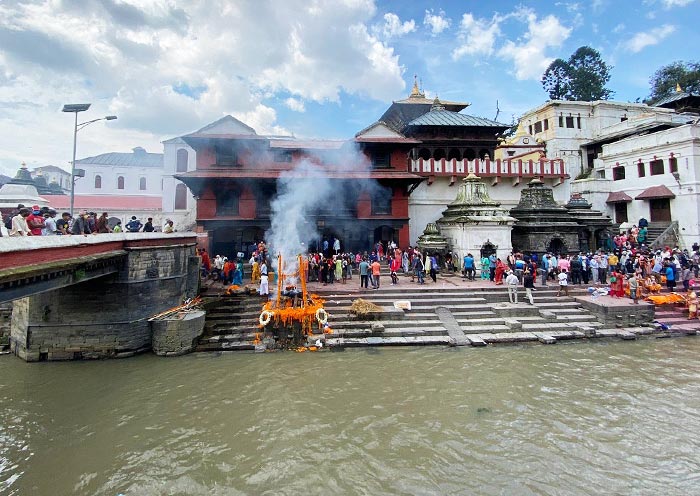
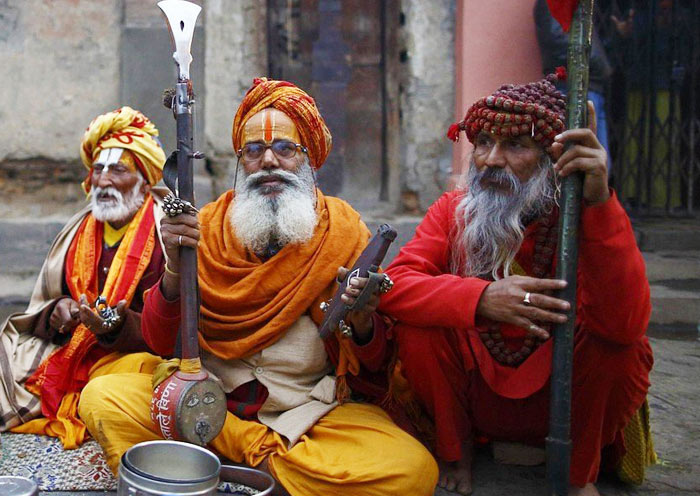
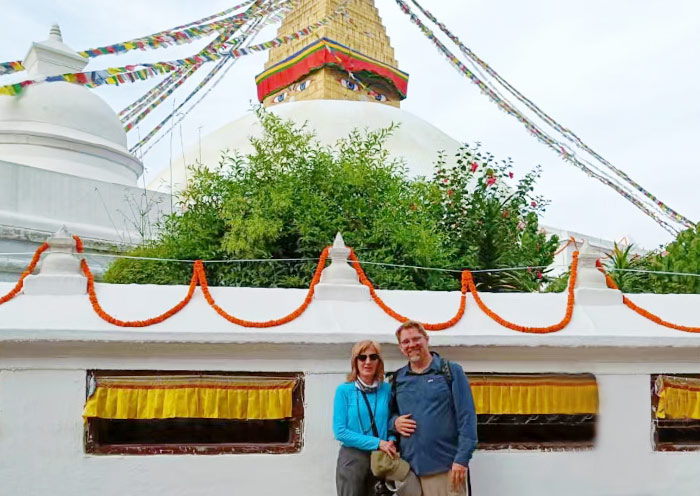
It is time to end your 11-day Tibet Nepal tour. You will have some free time in Kathmandu and explore more on your own till your guide escorts you to the airport for your flight to your next destination.
Thank you for choosing Asia Odyssey Travel (AOT) for your Asia Tour, and we are always here working for you and hope to see you again for your next trip to China/Asia. Safe journey!
Note: Please be advised that certain sites on the itinerary may be subject to change due to seasonal changes, weather conditions, national holidays, and special events. We reserve the right to modify the itinerary in order to enhance your tour experience in Tibet and Nepal. Any changes made to the itinerary will be done with your best interests in mind.
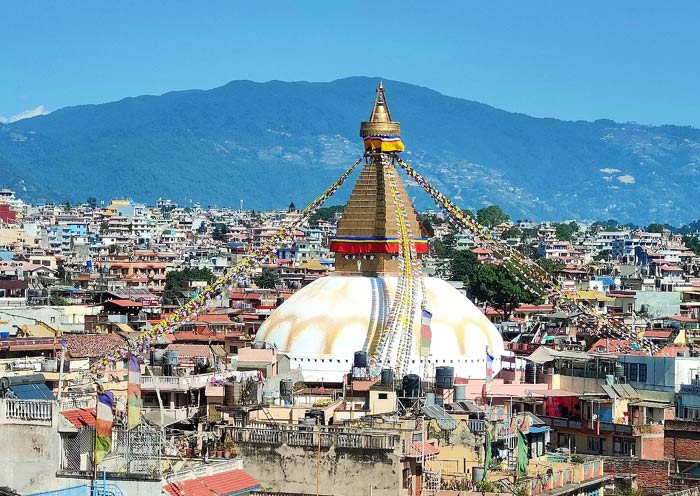
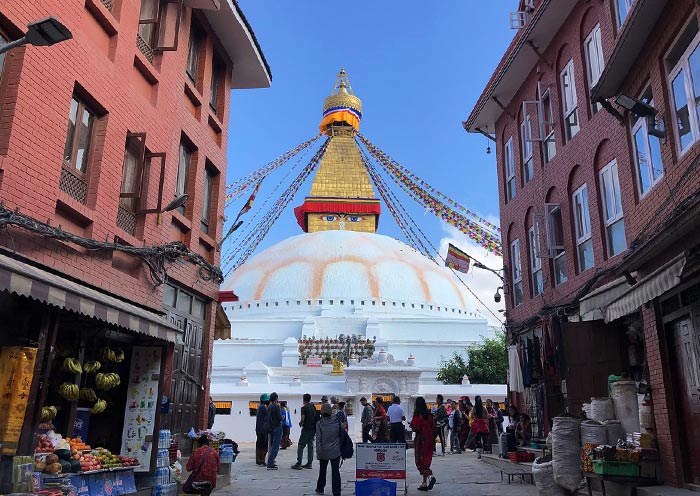
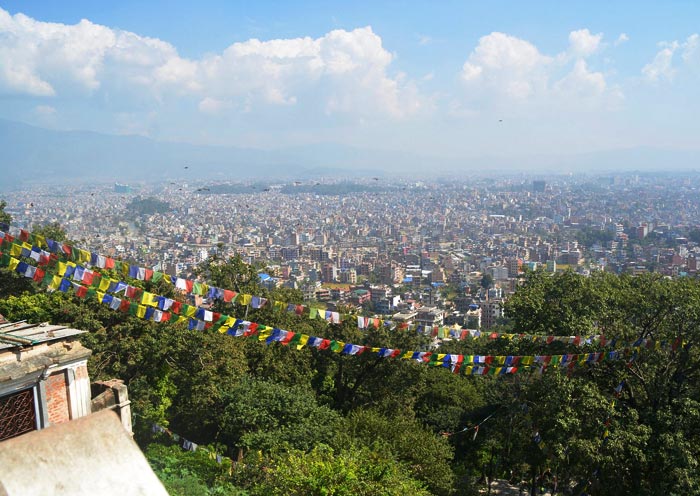
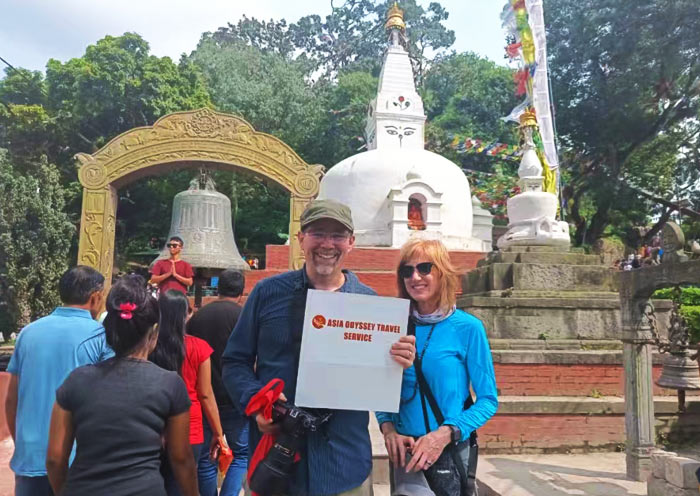
Price: What’s Included & What’s Excluded
What’s Included?
What’s Excluded?
Important Trip Notes for Booking a Private Tibet Tour
All foreign travelers are advised to make their bookings at least one week in advance and send the necessary documents to us for obtaining the permits. However, if you plan to visit Mount Kailash, it is recommended to book at least two weeks in advance, as it may take longer to obtain the necessary permits.
Accommodation & Hotel Condition for Your Tibet Tour
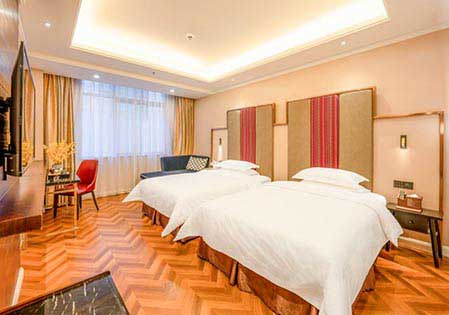

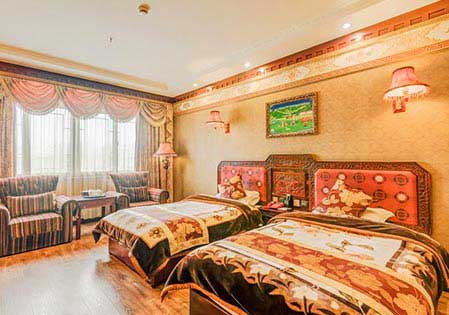
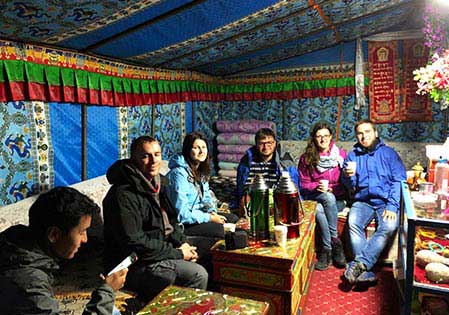
Have a good sleep everyday is very important during your China tour. In a private tour, you can decide on your own which hotel class you want - luxury 5 star, comfortable 4-star or economic 3-star.
All the hotels in each destination we selected are at good location, close to commercial street or tourist attractions. And, all the hotels we use have a business relationship for many years and they have windows, air-conditioners, hot water, showers, wifi... (except for basic accommodation condition when travel to Mount Everest) to ensure you luxury and comfortable sleep experience. The staff can speak English and they will provide you the high quality service. If you have any requirements, you can ask them to help.
Photo Gallery for This Itinerary
Latest Tibet Nepal Tours Reviews from Our Customers

cindy heng
Malaysia
Date of Experience: Sep 07, 2025
Tour Customized by: Abby
You May be Interested in This Tour: Customized Tour

mui m
Vietnam
Highly recommend Asia Odyssey - they planned a fantastic itinerary against our brief for Tibet, Nepal, and Bhutan. Special shoutout to Ms. Mandy who planned our trip, answered all our questions, was incredibly responsive, and was always helpful. She checked in during our trip to make sure we were okay as well. On our trip, our local guides were knowledgeable and kind and our accommodation was comfortable. All-in-all a fantastic experience and highly recommended.
Thank you for a wonderful experience!!
Destination(s): Tibet
Date of Experience: Jun 05, 2025
Tour Customized by: Mandy
You May be Interested in This Tour: Customized Tour

Bhawani Thangaratnam
Malaysia
Date of Experience: Aug 31, 2025
Tour Customized by: Steven
You May be Interested in This Tour: Customized Tour
Price: Request
(Based on a private tour for two people. Price varies depending on program, travel date, number of people.)
Free Enquiry! You don’t need to pay for the reservation.
- United States (+1)
- Australia (+61)
- Singapore (+65)
- Malaysia (+60)
- Philippines (+63)
- Canada (+1)
- Italy (+39)
- Indonesia (+62)
- United Kingdom (+44)
- Spain (+34)
- Mexico (+52)
- Hong Kong (+852)
- Thailand (+66)
- United Arab Emirates (+971)
- New Zealand (+64)
- South Africa (+27)
- Germany (+49)
- Brazil (+55)
- India (+91)
- France (+33)
- Vietnam (+84)
- The Netherlands (+31)
- Saudi Arabia (+966)
- Ireland (+353)
- Argentina (+54)
- Switzerland (+41)
- Romania (+40)
- Pakistan (+92)
- Japan (+81)
- Portugal (+351)
- Bangladesh (+880)
- South Korea (+82)
- Puerto Rico (+1)
- Türkiye (+90)
- China (+86)
- Belgium (+32)
- Qatar (+974)
- Greece (+30)
- Taiwan (+886)
- Austria (+43)
- Poland (+48)
- Israel (+972)
- Chile (+56)
- Sri Lanka (+94)
- Nigeria (+234)
- Peru (+51)
- Colombia (+57)
- Hungary (+36)
- Nepal (+977)
- Denmark (+45)
- Bulgaria (+359)
- Norway (+47)
- Slovenia (+383)
- Sweden (+46)
- Kuwait (+965)
- Costa Rica (+506)
- Ecuador (+593)
- Venezuela (+58)
- Malta (+356)
- Croatia (+385)
- Tunisia (+216)
- Czechia (+420)
- Mongolia (+976)
- Bahrain (+973)
- Mauritius (+230)
- Papua New Guinea (+675)
- Cambodia (+855)
- Dominican Republic (+1)
- Luxembourg (+352)
- Finland (+358)
- Guatemala (+502)
- Myanmar (+95)
- Maldives (+960)
- Slovakia (+421)
- Laos (+856)
- Serbia (+381)
- Brunei (+673)
- Oman (+968)
- Macao (+853)
- Panama (+507)
- Morocco (+212)
- Jordan (+962)
- Georgia (+995)
- Fiji (+679)
- Bolivia (+591)
- Lithuania (+370)
- Bahamas (+1)
- Cyprus (+357)
- Latvia (+371)
- Bhutan (+975)
- Iraq (+964)
- Iran (+98)
- Kenya (+254)
- Jamaica (+1)
- Zimbabwe (+263)
- Azerbaijan (+994)
- Uruguay (+598)
- Estonia (+372)
- Andorra (+376)
- Cameroon (+237)
- Ghana (+233)
- Kazakhstan (+7)
- Nicaragua (+505)
- Egypt (+20)
- Russia (+7)
- Albania (+355)
- Réunion (+262)
- Montenegro (+382)
- Algeria (+213)
- Afghanistan (+93)
- Martinique (+596)
- Uganda (+256)
- Honduras (+504)
- North Macedonia (+389)
- Trinidad and Tobago (+1)
- Suriname (+597)
- Antigua and Barbuda (+1)
- Zambia (+260)
- Ukraine (+380)
- Armenia (+374)
- Barbados (+1)
- Belarus (+375)
- Palestine (+970)
- Lesotho (+266)
- Moldova (+373)
- Ethiopia (+251)
- French Polynesia (+689)
- Gambia (+220)
- Guam (+1)
- Gibraltar (+350)
- Isle of Man (+44)
- New Caledonia (+687)
- El Salvador (+503)
- Comoros (+269)
- Seychelles (+248)
- Chad (+235)
- Samoa (+685)
- Cook Islands (+682)
- Palau (+680)
- Paraguay (+595)
- DR Congo (+243)
- Solomon Islands (+677)

